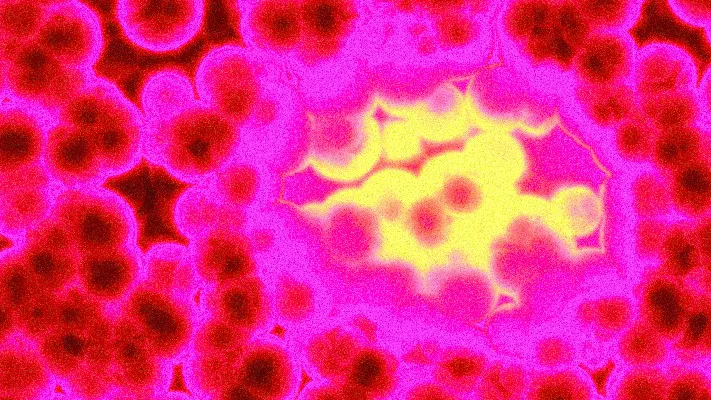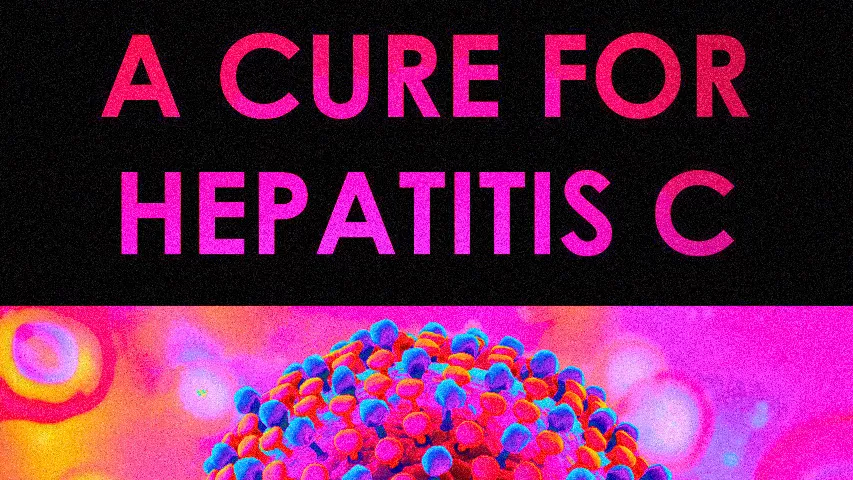LGV Lymphogranuloma Venereum Treatment in Hong Kong
562
Challenges for LGV is Diagnosis not treatment. LGV Lymphogranuloma Venereum Treatment in Hong Kong

LGV (Lymphogranuloma Venereum) Treatment in Hong Kong
Lymphogranuloma venereum (LGV) is caused by serovars L1, L2, or L3 of C. trachomatis. In heterosexuals, the most common clinical manifestation is tender inguinal and/or femoral lymphadenopathy, usually on one side. A self-limiting genital ulcer or papule may appear at the inoculation site, but these lesions often resolve by the time patients seek care. In women or men who have sex with men (MSM), rectal exposure can lead to proctocolitis that resembles inflammatory bowel disease, with symptoms such as mucoid and/or hemorrhagic rectal discharge, anal pain, constipation, fever, and/or tenesmus. Outbreaks of LGV proctocolitis have been reported among MSM. If untreated, LGV can become an invasive, systemic infection, potentially leading to chronic colorectal fistulas and strictures, and reactive arthropathy has also been noted. However, cases of asymptomatic rectal LGV have been reported. Individuals with genital and colorectal LGV lesions may also experience secondary bacterial infections or coinfections with other sexually and non-sexually transmitted pathogens.
LGV is specifically caused by serotypes L1, L2, and L3 of the bacterium *Chlamydia trachomatis*. These serotypes differ from those that cause trachoma, inclusion conjunctivitis, and chlamydial urethritis and cervicitis, as they are capable of invading and reproducing in regional lymph nodes.
In the U.S., LGV occurs sporadically but is endemic in parts of Africa, India, Southeast Asia, South America, and the Caribbean. It is diagnosed more frequently in men than in women and has been increasingly reported in North America, Europe, and Australia among MSM.
Contact us at info.bkk@pulse-clinic.com or chat on your preferred platform:
![]() +66 65 237 1936
+66 65 237 1936  @PULSEClinic
@PULSEClinic ![]() PulseClinic
PulseClinic
Transmission
LGV is primarily transmitted through sexual contact. The bacteria typically enter through moist mucosal surfaces, most often the rectum or vagina, although infections can also occur in the penis or mouth. Like other sexually transmitted infections, anyone engaging in vaginal, anal, or oral sex without using a condom is at risk of contracting LGV.
The highest risk for LGV transmission occurs with unprotected anal intercourse. Activities such as fisting, sharing sex toys, and rectal douching can also contribute to the spread of LGV.
Symptoms and Signs
Lymphogranuloma venereum occurs in 3 stages.
The 1st stage:
The infection begins after an incubation period of about three days, starting with a small skin lesion at the site of entry. This lesion may cause the overlying skin to break down (ulcerate), but it often heals quickly and may go unnoticed. Symptoms typically emerge between three days and three weeks after exposure, presenting as a small, painless blister or sore where the infection first enters the body, which might also go unnoticed. Multiple small lesions can appear, resembling a herpes infection. Blisters may also develop in other areas, such as around the anus, on the lips, or in the mouth, accompanied by systemic symptoms like fever and fatigue. A tender area may form in the lymph glands in the groin. Men may experience proctitis, which is inflammation of the rectal lining, leading to symptoms such as rectal pain, discharge, bloody stools, constipation, and tenesmus (the feeling of needing to have a bowel movement). However, many individuals, particularly women, may remain asymptomatic during this stage.
The 2nd stage:
In men, symptoms typically begin about 2 to 4 weeks after exposure, with enlargement of the inguinal lymph nodes on one or both sides, forming large, tender, sometimes fluctuant masses known as buboes. Inflamed and swollen lymph glands may also occur in the groin, armpit, or neck. An anal infection can lead to painful ulcerations, discharge, and bleeding, along with potential fever or rash. The buboes may adhere to deeper tissues, causing inflammation of the overlying skin, sometimes accompanied by fever and general malaise. In women, backache or pelvic pain is common, and initial lesions may appear on the cervix or upper vagina, leading to enlargement and inflammation of deeper perirectal and pelvic lymph nodes. Multiple draining sinus tracts may develop, discharging pus or blood.
In the 3rd stage:
Lesions may heal with scarring, but sinus tracts can persist or recur. Ongoing inflammation from untreated infections can block lymphatic vessels, leading to swelling and skin sores. Most individuals recover after the second stage of LGV if they receive appropriate treatment. However, if left untreated, symptoms can worsen, resulting in generalized swelling of the lymph glands, significant genital swelling with ulcers, and damage to the rectum or vagina, which can cause lasting harm to the infected tissue and overall health. Scarring, swelling, and deformities in the affected areas have also been reported. Occasionally, the bacteria can spread throughout the body, leading to reactive arthritis. While there has been an increase in cases, complications among men who have sex with men (MSM) have not been highly prevalent.
Even if you don’t have symptoms, you can still transmit the infection to sexual partners.
Individuals who engage in receptive anal sex may experience severe proctitis or proctocolitis with bloody, purulent rectal discharge during the initial stage. In chronic stages, colitis that mimics Crohn's disease may cause tenesmus and strictures in the rectum or pain due to inflamed pelvic lymph nodes. Proctoscopy may reveal diffuse inflammation, polyps, masses, or mucopurulent exudate—findings that resemble inflammatory bowel disease.
Diagnostic Considerations
Tests for chlamydia will also identify LGV infections, so a negative chlamydia test indicates no LGV infection. Chlamydia is diagnosed by analyzing a urine sample or taking swabs from affected areas, including the rectum, urethra, vagina, or throat.
Diagnosis relies on clinical suspicion, epidemiological data, and ruling out other causes of proctocolitis, inguinal lymphadenopathy, or genital or rectal ulcers. Specimens from genital lesions, the rectum, and lymph nodes (such as lesion swabs or bubo aspirates) can be tested for C. trachomatis using culture, direct immunofluorescence, or nucleic acid detection. Nucleic acid amplification tests (NAATs) for C. trachomatis perform well on rectal specimens, though they are not FDA-cleared for this use. Many laboratories have conducted the necessary CLIA validation studies to provide clinical results from rectal specimens. Men who have sex with men (MSM) presenting with proctocolitis should be tested for chlamydia, with rectal NAATs being the preferred testing method.
Additional molecular techniques, such as PCR-based genotyping, can differentiate LGV from non-LGV *C. trachomatis* in rectal specimens. However, these tests are not widely available and results may not be timely enough to impact clinical management.
Chlamydia serology (complement fixation titers >1:64 or microimmunofluorescence titers >1:256) may support the diagnosis of LGV in the right clinical context. However, comparative data on the various serological tests are limited, and the diagnostic value of these older serological methods has not been established. Interpretation of serologic tests for LGV is not standardized, and these tests have not been validated for clinical presentations of proctitis, with serovar-specific tests for *C. trachomatis* being rare.
Lymphogranuloma venereum should be suspected in patients with genital ulcers, swollen inguinal lymph nodes, or proctitis, especially if they live in or have sexual contact with individuals from areas where the infection is prevalent. LGV is also considered in patients with buboes, which may be confused with abscesses from other bacterial infections.
Diagnosis is typically made by detecting antibodies to chlamydial endotoxin (complement fixation titers > 1:64 or microimmunofluorescence titers > 1:256) or through genotyping using polymerase chain reaction-based NAAT. Antibody levels are usually elevated upon presentation or shortly after and tend to remain high.
Direct tests for chlamydial antigens using immunoassays (e.g., enzyme-linked immunosorbent assay [ELISA]) or immunofluorescence with monoclonal antibodies to stain pus, as well as NAATs, may be available through reference laboratories (e.g., the Centers for Disease Control and Prevention in the U.S.).
All sexual partners should be evaluated.
Following what appears to be successful treatment, patients should be monitored for six months.
Treatment
Most cases of LGV can be effectively treated with a 21-day course of the oral antibiotic doxycycline. If doxycycline is not suitable for some reason, other antibiotics can also be effective against LGV, and doxycycline has minimal interactions with anti-HIV medications. Symptoms should begin to improve within one to two weeks after starting treatment, although recovery may take longer if the infection has been present for a while.
It is important to abstain from sexual activity if you have LGV or any other sexually transmitted infection until follow-up tests confirm that the infection has cleared.
If possible, identify, test, and treat any sexual partners who may have been at risk of infection.
It is also possible to become reinfected with LGV after successful treatment, so ensure that any sexual partners have also received treatment.
During the initial visit (before diagnostic tests for chlamydia results are available), individuals showing clinical signs consistent with LGV—such as proctocolitis or genital ulcer disease with lymphadenopathy—should be presumptively treated for LGV. State law requires these cases to be reported to the health department.
Treatment not only cures the infection but also prevents further tissue damage, although tissue reactions can still lead to scarring. Buboes may need to be aspirated through intact skin or drained surgically to prevent inguinal or femoral ulcerations.
Effective treatments for early disease include doxycycline 100 mg taken orally twice a day, erythromycin 500 mg taken orally four times a day, or tetracycline 500 mg taken orally four times a day, all for 21 days. Azithromycin 1 g taken orally once a week for 1 to 3 weeks is likely effective, but neither it nor clarithromycin has been thoroughly evaluated.
Swelling of damaged tissues in later stages may persist even after the bacteria have been eliminated. Buboes can be drained by needle or surgically if symptomatic relief is needed, but most patients respond well to antibiotics. Surgical intervention may be required for buboes and sinus tracts, while rectal strictures can usually be treated through dilation.
Anyone who has had sexual contact with a person diagnosed with lymphogranuloma venereum in the 60 days before the onset of symptoms should be examined and tested for urethral, cervical, or rectal chlamydial infections based on the site of exposure. They should receive presumptive treatment with a single dose of azithromycin 1 g orally or doxycycline 100 mg orally twice a day for 7 days, regardless of whether there is evidence of LGV.
Recommended Regimen
- Doxycycline 100 mg orally twice a day for 21 days
Alternative Regimen
- Erythromycin base 500 mg orally four times a day for 21 days
All sex partners should be evaluated.
After apparently successful treatment, patients should be followed for 6 months.
Contact us at info.bkk@pulse-clinic.com or chat on your preferred platform:
![]() +66 65 237 1936
+66 65 237 1936  @PULSEClinic
@PULSEClinic ![]() PulseClinic
PulseClinic
Trust PULSE CLINIC to take care of your health like other 45000 people from over 130 countries. We provide discreet professional service with high privacy. Here to help, not to judge.
Other Management Considerations
Patients should be monitored clinically until all signs and symptoms have resolved. Individuals diagnosed with LGV should be tested for other STDs, particularly HIV, gonorrhea, and syphilis. Those who test positive for any additional infections should be referred for or provided with the appropriate care and treatment.
Follow-up
Patients should be followed clinically until signs and symptoms resolve.
Management of Sex Partners
Individuals who have had sexual contact with someone diagnosed with LGV within the 60 days prior to the onset of symptoms should be examined and tested for urethral, cervical, or rectal chlamydial infections, depending on the site of exposure. They should receive presumptive treatment with a chlamydia regimen, which includes either a single dose of azithromycin 1 g orally or doxycycline 100 mg taken orally twice a day for 7 days.
Special Considerations
Pregnancy
Pregnant and breastfeeding women should be treated with erythromycin. Doxycycline should be avoided during the second and third trimesters of pregnancy due to the risk of tooth and bone discoloration, though it is considered safe for breastfeeding. Azithromycin may be beneficial for treating LGV during pregnancy, but there is currently no published data on the effective dosage or duration of treatment.
HIV Infection
People with both LGV and HIV should be treated with the same regimens as those who are HIV-negative. However, they may require extended therapy, and there could be a delay in the resolution of symptoms.
Contact us at info.bkk@pulse-clinic.com or chat on your preferred platform:
![]() +66 65 237 1936
+66 65 237 1936  @PULSEClinic
@PULSEClinic ![]() PulseClinic
PulseClinic
Add us on Line and stay in touch.
Loading...
Clinic Locations
Loading...



